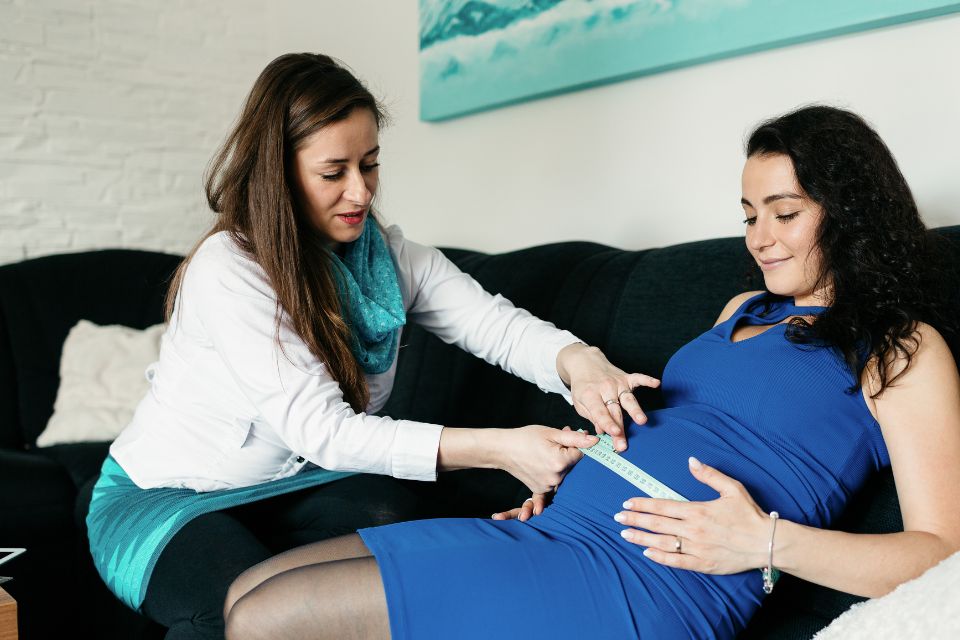It will come as no surprise that the UK NHS is struggling to balance the books. The King’s fund has released a new report on the financial state of the NHS. Neil Stewart, Editorial Director, reflects on the concerning impact for maternity services.
The Kings Fund, the leading health think tank in the UK, dropped its latest report on the financial state of the NHS on 18th May and it makes scary reading for maternity services.
Despite the additional £22.6 Billion injected by the Chancellor Rachel Reeves only last autumn the Kings fund says of NHS Trust management-
“Leaders described how financial risks are now becoming clinical risks to patient safety – conversations that were previously unheard of” – but not if you have worked in maternity where the CQC has been flagging up for several years staffing and other “risk” factors in its reports on maternity units calling almost half “inadequate” or “requires improvement” sending clear warning signals to government.
The Kings Fund report goes on to say
“In order to cap staffing costs, providers are freezing recruitment of new staff, reducing overtime payments, and limiting their use of bank and agency staff”.
This is what midwives are reporting on the ground: no replacement recruitment and tighter restrictions on use of bank and agency staff, which, when combined with sickness, burnout, high numbers coming up to retirement, explain many of the pressures reported in maternity care.
Added to this the promised supply of new midwives coming out of university is running into a threefold problem.
First, many of those extra student places injected by government are not completing their courses. RCM’s 2023 report indicated a drop out of 15%, with anecdotal reports now that these numbers are rising.
Second, a relatively new phenomenon, of student midwives qualifying but then deciding not to practice, many reporting challenging experiences in their placements, not reflecting what they expected, some even having to extend their student time because of difficulties “catching” the 40 births needed for registration. Things unheard of over a decade ago.
Thirdly students who do qualify and are ready to practice are finding that they are not, despite all the stories of shortages, guaranteed a job, unlike in Wales and the Republic of Ireland where a job is still guaranteed and planned .
This broken pact has led to a national petition starting, which we highlighted last week. Senior midwives warn that newly qualified midwives can’t just sit on the shelf and wait a year or two, practice is essential to confidence and competence, and many will not come back when vacancies open, having moved on with their life.
The Kings Fund go on to point to the kind of measures that will need to be adopted but, unlike in previous periods of “consolidation”, they are explicit in including a reference to maternity services:
“Consolidation and closing of services may mean that patients have to travel further to access the services they need ……..For example, in some cases a route to sustainable services in a local area would be to reconfigure or consolidate services, as in North London with maternity services “
Older midwives will know that this has been going on for a long time in other parts of the country that have faced hard times as local maternity units, and midwifery led units were closed or consolidated towards large general hospitals and emergency services – something accelerated by the COVID pandemic, when many local services have not been restored, or only with a huge fight by midwives and women.
North London, indeed, London as a whole, has seen a significant drop in the local birth rate and this is translated into proposals for unit closures. The problem with this is that, while the birth rate has gone down, the complexity of birth and the new safety guidance is increasing the workload, not least the significantly large increase in the number of induction and emergency Caesarean Sections to the point where many units report that more than half of pregnant women are giving birth by C Section, an extraordinary medical and social change with virtually no public debate on how and why this is happening.
The report also warns of the threat to Health Visiting and Sexual Health services which were moved to local authorities along with Public Health, as they are now threatened by the financial problems of local government just as increasing research is showing how important maternal and infant support is to both in the first year – the dots are not being joined up.
To add to this picture the funds for maternity safety were cut from £95 million to £2million, with the funding being transferred to the new Integrated Care Boards and Services to commission services.
It would be good to think this is just moving the resources to meet the same safety needs by a different route but the Kings Fund report also points to the financial problems ICB’s are having, so uncertainty prevails on whether that money will translate into something long term, such as the recommendations of the Renfrew report on maternity safety published in Oct 2024 which proposed a reconfiguration of maternity services. That change would need to be driven by determined new ICB commissioners trying to restore women’s choice, confidence and safety in maternity services.
To this long tale of anxiety midwifery university lecturers will add that a large number of the universities that host midwifery schools are suffering the worst university financial crisis in decades, often being those former polytechnics and redbrick universities which stepped up in the 1990’s and took on the nursing and midwifery courses the government of the day demanded. They are some of the worst affected by the drop in high fee paying overseas students– and their midwifery staffing levels are being frozen, and budgets cut, along with all others. Again, the dots do not seem to be joined across with the NHS.
In many areas of health care managers will look to cut services, postpone procedures and extend waiting lists, but pregnant women are not and can’t be postponed or put on waiting lists and their support has to be there when their time comes. With a clear 6-8 month notice from a 9 month countdown surely that is one target than can be met.
But the birthrate is dropping, down from a peak of almost 750,000 to around 600,000 so the Treasury and others in government conclude that surely this can mean less need for midwives, whose numbers have been maintained with only a small increase since 2010.
The challenge for the midwifery profession and its allies is to explain how the radical changes in maternity procedures in the past 15 years: more complexity, more demanding safety measures; more induction; much more surgery; more birth trauma reporting; more need for specialist mother and baby services all means the simple treasury equation does not add up and does not provide a service that pregnant women say they want and government policy says they deserve.
It looks like midwifery’s turn to push hard for the maternity services women say they want.
Neil Stewart
May 2025


